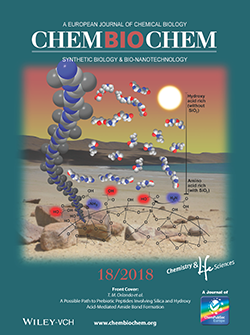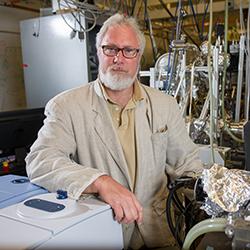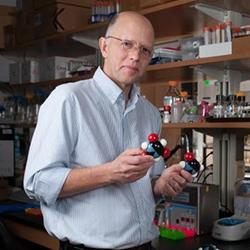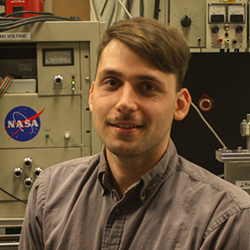It is one of the most abundant minerals on Earth. Silica is found in beach sand, playground sand, and desert sand. It is in gravel, clay, and granite. It is in the concrete and glass structures of buildings everywhere. A study now shows that this prosaic material also could have played a key role in forming the polymeric molecules of life.
How the molecules of life formed on Earth is the subject of extensive studies. Researchers have long suggested that minerals may have played a role in the formation of peptides in prebiotic Earth. However, most past attempts to use minerals to catalyze amino acid polymerization have not shown a significant improvement or difference in products compared to the same reactions in the absence of minerals.
The study – by Georgia Tech researchers in the National Science Foundation (NSF)/NASA Center for Chemical Evolution (CCE) – finds that drying and heating a mixture of amino and α-hydroxy acids in the presence of silica yields peptides that are longer than those formed in its absence. (Peptides are the precursors of proteins; amino acids are the building blocks of peptides; α-hydroxy acids are chemically similar to amino acids and could have been present in prebiotic Earth; silica would have been abundant on Earth billions of years ago.)
The findings suggest a mechanism by which organic compounds and silica on prebiotic Earth could have worked together to produce peptides. Designated a VIP (Very Important Paper), the paper reporting results is the front-cover article of the Sept. 17, 2018, issue of ChemBioChem.
The work was supported by the NSF and NASA Astrobiology Program under the NSF Center for Chemical Evolution (CHE-1504217). “The study shows silica, a major constituent of Earth’s crust, could play an important role in prebiotic evolution,” says NSF’s Acting Deputy Division Director in Chemistry Lin He. “It provides the grounds to better understand the rules of life and enables a wide range of applications in biomedical engineering, biosensors, chemical, and biological research.”
“The production of peptides in model prebiotic reactions has been a bottleneck in origins-of-life research,” says Thomas Orlando, a professor in the School of Chemistry and Biochemistry and the paper’s corresponding author. “With this discovery we can move to the next level and ask even deeper questions about the origins of life: Could minerals have played a role in selecting some of the organic molecules that participated in the origins of life? Are there common mineral properties that allow them to interact with prebiotic building blocks in a productive way?”
CCE researchers reported in 2015 that drying and heating mixtures of hydroxy acids and amino acids produces polymers called depsipeptides. While depsipeptides may also have played a role in the origin of life, finding an efficient prebiotic method to produce pure peptides remains of great interest.
“It is well-known that minerals react with organic acids, making mineral-organic interfaces that could have existed on early Earth,” Orlando says. Since the founding of the CCE, more than 10 years ago, affiliated researchers have been investigating the possible impacts of minerals on model prebiotic reactions.
“We have been asking: Could minerals, through their cooperation with simple organic molecules on early Earth, have facilitated the synthesis of complex polymers that, ultimately, gave rise to life?” says Nicholas Hud, professor of chemistry and biochemistry, CCE director, and a coauthor of the paper.
“Like almost everyone, we are curious about the origins of life,” says Aaron McKee, a Ph.D. candidate and the paper’s first author. “But we are also interested in the relevance to modern life.” For example, McKee says, scientists are developing nanoparticles that are essentially tiny functionalized mineral surfaces as biomolecule detectors or drug delivery agents.
“There is a vast matrix of minerals and organic molecules related to those used in this study. Some of these would have also been present on prebiotic Earth,” McKee says. “We are now in an excellent position to investigate the numerous combinations of these minerals and organic molecules to see if there is any other chemical cooperation between inorganic and organic substances that could have facilitated the production of molecules important for starting life.”




A. Maureen Rouhi, Ph.D.Director of CommunicationsCollege of Sciences
